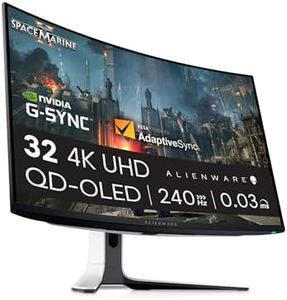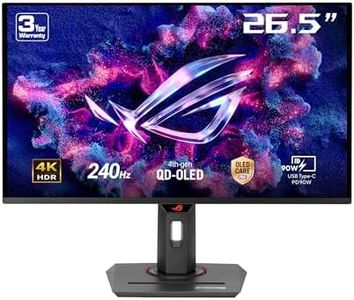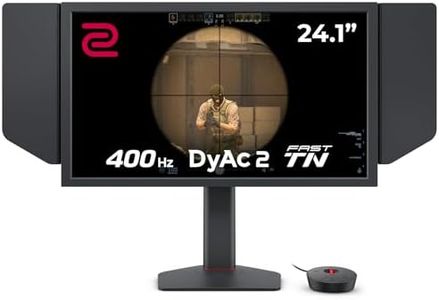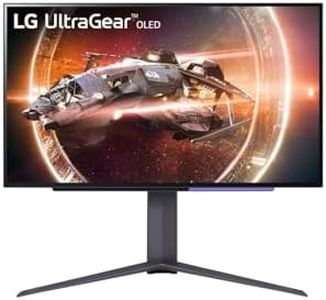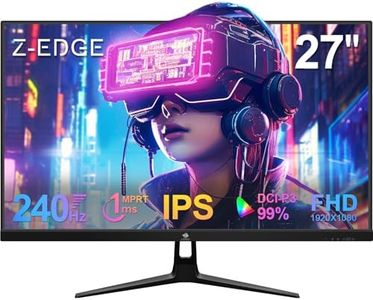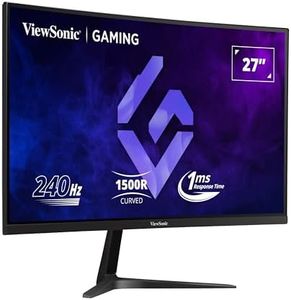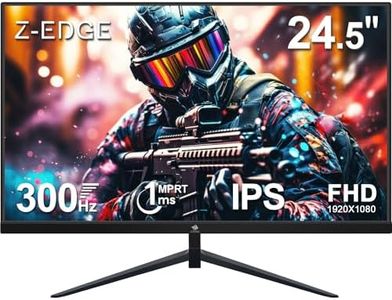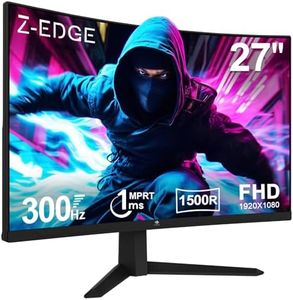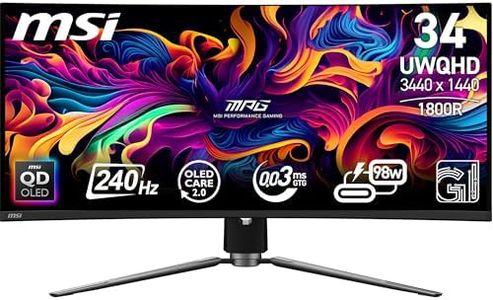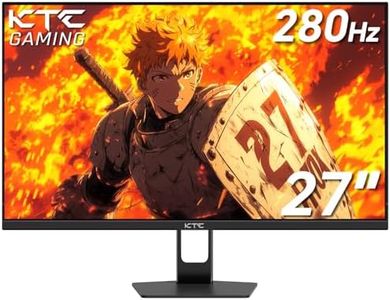We Use CookiesWe use cookies to enhance the security, performance,
functionality and for analytical and promotional activities. By continuing to browse this site you
are agreeing to our privacy policy
10 Best 240 Hz Gaming Monitors
From leading brands and best sellers available on the web.Buying Guide for the Best 240 Hz Gaming Monitors
Choosing a 240 Hz gaming monitor can be exciting, especially if you're looking for a smoother, more responsive experience in fast-paced games. Before you buy, it's important to understand what makes a monitor well-suited for gaming, and how different specifications can affect your enjoyment and performance. Taking the time to learn about key features will help you match a monitor to your play style and needs.Refresh Rate (Hz)The refresh rate, measured in Hertz (Hz), indicates how many times per second the monitor updates its image—so a 240 Hz monitor redraws the screen 240 times per second. This is crucial for gaming because it leads to much smoother motion and lower input lag compared to lower refresh rates, making fast-paced games feel more fluid. Most users will find a noticeable difference moving up from 60 Hz or 144 Hz, but gains become more subtle beyond 240 Hz. If you mostly play fast multiplayer games, like shooters or racing titles, a higher refresh rate can offer a competitive edge. If you play mostly slower-paced games, the advantage is less pronounced.
Response TimeResponse time refers to how quickly a pixel can change from one color to another, typically measured in milliseconds (ms). A fast response time means less motion blur and ghosting, which is particularly important in high-speed gaming. Monitors advertise different response times—around 1 ms is excellent, while 4 ms or higher can be noticeable in some scenarios. If you are sensitive to blur or competitive gaming is your focus, prioritize a lower response time. For casual gaming, response time is less critical but still contributes to overall clarity.
Panel TypeThe panel type determines the color quality, viewing angles, and speed of the monitor. TN panels are the fastest and generally have the lowest response times, ideal for competitive gamers, but offer weaker colors and narrower viewing angles. IPS panels have better colors and wider viewing angles while delivering respectable response times, suitable for both gaming and general use. VA panels provide strong contrast, making blacks deeper, but can suffer from slower response times and some smearing. To choose, think about whether pure speed, color quality, or contrast is most important in your games and daily usage.
Screen Size and ResolutionScreen size affects immersion and comfort, commonly ranging from 24 to 27 inches for 240 Hz monitors. A larger screen offers more immersion, but you should make sure it's comfortable for your desk distance. Resolution affects sharpness—1080p (Full HD) is standard at this refresh rate, offering high frame rates even with mid-range hardware, while 1440p (Quad HD) is sharper and more detailed but requires stronger computer performance. If you prefer sharp visuals and your computer can keep up, a higher resolution could be worthwhile; if you focus on ultra-fast refresh rates and competitive play, 1080p is often optimal.
Adaptive Sync TechnologyAdaptive Sync technologies like G-SYNC and FreeSync allow the monitor to match its refresh rate to the graphics card’s output. This helps eliminate screen tearing and stuttering during gaming, making gameplay look smoother even if your frame rates fluctuate. Monitors may support one or both, and which you pick should ideally match your graphics card (NVIDIA for G-SYNC, AMD for FreeSync), but many modern monitors support both. If you notice tearing or stuttering when gaming, ensure this feature is included.
ConnectivityConnectivity determines how you’ll hook your monitor up to your devices. Key options include HDMI and DisplayPort, but not all ports support 240 Hz at every resolution—DisplayPort is most commonly used for high refresh rates. Some monitors also include USB hubs or headphone jacks, which can tidy up your setup. Check what outputs your PC or console supports and ensure the monitor offers the matching input for 240 Hz operation. If you have multiple devices, more ports can add flexibility.
Ergonomics and Build FeaturesErgonomics refers to how easily you can adjust the monitor—common adjustments include height, tilt, swivel, and pivot. Good ergonomics make it easier to customize your viewing experience for comfort, reducing strain during long gaming sessions. If you frequently adjust your monitor or play at different angles, features like height adjustability and VESA mounting support are worth considering. If your setup is static, these may be less of a priority.

